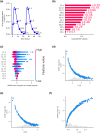Practical guide to SHAP analysis: Explaining supervised machine learning model predictions in drug development
- PMID: 39463176
- PMCID: PMC11513550
- DOI: 10.1111/cts.70056
Practical guide to SHAP analysis: Explaining supervised machine learning model predictions in drug development
Abstract
Despite increasing interest in using Artificial Intelligence (AI) and Machine Learning (ML) models for drug development, effectively interpreting their predictions remains a challenge, which limits their impact on clinical decisions. We address this issue by providing a practical guide to SHapley Additive exPlanations (SHAP), a popular feature-based interpretability method, which can be seamlessly integrated into supervised ML models to gain a deeper understanding of their predictions, thereby enhancing their transparency and trustworthiness. This tutorial focuses on the application of SHAP analysis to standard ML black-box models for regression and classification problems. We provide an overview of various visualization plots and their interpretation, available software for implementing SHAP, and highlight best practices, as well as special considerations, when dealing with binary endpoints and time-series models. To enhance the reader's understanding for the method, we also apply it to inherently explainable regression models. Finally, we discuss the limitations and ongoing advancements aimed at tackling the current drawbacks of the method.
© 2024 AbbVie Inc. Clinical and Translational Science published by Wiley Periodicals LLC on behalf of American Society for Clinical Pharmacology and Therapeutics.
Conflict of interest statement
All authors are employees of AbbVie and may hold AbbVie stock.
Figures






References
-
- Liu Q, Zhu H, Liu C, et al. Application of machine learning in drug development and regulation: current status and future potential. Clin Pharmacol Ther. 2020;107:726‐729. - PubMed
-
- Terranova N, Renard D, Shahin MH, et al. Artificial intelligence for quantitative modeling in drug discovery and development: an innovation and quality consortium perspective on use cases and best practices. Clin Pharmacol Ther. 2024;115:658‐672. - PubMed
Publication types
MeSH terms
LinkOut - more resources
Full Text Sources

